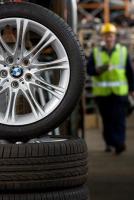Find parts for your car
Used Mitsubishi Outlander Differential
All used Mitsubishi Outlander Differential listed on Breakeryard.com are tested, original (OEM) manufacturer parts and come with a 14 day money back guarantee. Breakeryard.com list cheap new OES or aftermarket car parts at discounted prices or used OEM car parts up to 80% cheaper than main dealer prices for Mitsubishi Outlander from premium breaker yards from across the UK.
About Differential
What is a differential/what does it do?
A differential is a geared device that transfers power from the engine/gearbox to the driveshafts and on to the driven wheels of a car. The differential is generally located towards the centre of the driven axle. The internal gearing within the differential serves 3 main functions:
- Reduces the rotational speed of the gearbox or propshaft acting as a final down gearing mechanism
- Splits the gearbox output into multiple directions and directs it towards each driven wheel
- Allows each driven wheel to rotate at different speeds when cornering. This is essential as the outside wheel must travel further than the inside wheel when cornering.
Getting into the details of differentials
On a front wheel drive car the differential is generally located beside the gearbox and often offset from the centre of the axle.
A rear wheel drive car has its differential centred on the rear axle, with power transmitted from the gearbox via a propshaft.
All wheel drive cars have 2 or 3 differentials depending on the system. For permanent 4 wheel drive vehicles there is 1 for each axle and a 3rd central differential ensuring front and rear wheels can travel at different speeds. Non-permanent 4 wheel drive vehicles generally don’t have a central differential and front and rear wheels rotate at similar speeds.
There are various technologies employed in differentials but the most common types are open differentials, limited slip differentials, viscous coupling differentials, locking differentials and the Torsen differential. The type fitted to each vehicle is generally specified by the manufacturer and is not changed. However, some off road vehicles can be upgraded to offer better road or off road handling depending on the main use of the vehicle.
What if something goes wrong with a differential?
Due to the number of moving parts within a differential, routine maintenance is highly recommended. Issues are likely to occur if lubricant levels are not maintained. Symptoms of problems include gear/bearing whine or howling, clunking or clicking or other rumbling or whirring sounds emanating from the axle during driving.
Mitsubishi trivia
- Mitsubishi didn't just break a record in 2011; they broke five in one day! In a durability test in Canada, they smashed records for the greatest distance driven in reverse on snow, the shortest braking distance on ice, the fastest vehicle slalom on ice, the fastest driven square lap, and the most vehicle figure eights on ice in two minutes.
- The Mitsubishi Lancer Evolution X is hard to park. That's because it doesn't have a reverse gear! Rather than simply sliding it into reverse, drivers have to change the rotation of the first and third gears. It saves weight, but it's not easy to get used to.
- A Mitsubishi Starion Turbo was almost as big of a star as Burt Reynolds after it featured in iconic chase film Cannonball Run II.
- Mitsubishi and actor Jackie Chan have a long history together. Mitsubishi cars have featured in every Jackie Chan film ever made, and there's even an official Jackie Chan race.
- Mitsubishi are responsible for building the Silent Shaft engine. The technology used in the 4-cylinder engines was revolutionary and was quickly licensed for use on Saab and Porsche cars.



